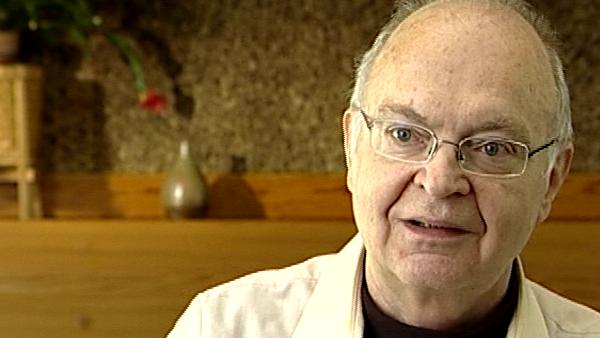NEXT STORY

Writing a users' manual for TeX
RELATED STORIES

NEXT STORY

Writing a users' manual for TeX
RELATED STORIES


|
Views | Duration | |
|---|---|---|---|
| 51. Deciding to make my own typesetting program | 2168 | 02:15 | |
| 52. Working on my typesetting program | 1864 | 02:47 | |
| 53. Mathematical formula for letter shapes | 1518 | 05:41 | |
| 54. Research into the history of typography | 1483 | 01:36 | |
| 55. Working on my letters and problems with the S | 1855 | 04:41 | |
| 56. Figuring out how to typeset and the problem with specifications | 1360 | 06:15 | |
| 57. Working on TeX | 1655 | 02:36 | |
| 58. Why the designer and the implementer of a program should be the... | 1736 | 01:17 | |
| 59. Converting Volume Two to TeX | 1285 | 03:23 | |
| 60. Writing a users' manual for TeX | 1268 | 02:57 |


By the time… by Easter time then at… at… near the end of my sabbatical year, I finally was able to typeset a few… a few sample pages of… and… and got my… my test program going. But I didn't have Volume Two done by any… by any stretch of the imagination. Still, it was… enough was in place that… that I could see that it was going to be possible.
I guess I bet… I should mention that I… I had no idea that I was designing a typesetting system that anybody else in the world would ever use, besides me and my secretary. The… my idea was that… that I would teach Phyllis, my… who was my secretary for almost 20 years, and I dedicated one of my books to her, that's a long story there, but anyway… So Phyllis and I were going to be the users of this TeX system, and… and I tried to make it so that she, you know, well I… I knew she'd be able to learn it, but I tried to… to design it just… just good enough to do my books and no other books.
I… so… so the next phase was to… was, however, for me to go through the entire manuscript of Volume Two, and I wrote a program that converted from the Belfast system to my… my new system that would be… that would be a close approximation. And I started in. Well, it was… it was several months of… of work, it's a 700 some, 700 or 800 page book, but another… I learnt another important lesson during this time. Not only should the designer of a system… of a system be the first, that would be for the implementer… he… also has to be the first user, because I'm actually… actually using the system, I'm always getting ideas about how to make it better. And if… and if I'm not a heavy user, but just a designer, I don't have the experience to… to know why… why those… why those features are useful. So I kept track of all of the changes that I made to the system at this time, and I also knew how many pages I had been typesetting of Volume Two. And I went through and… and made a graph of it afterwards, and it's almost a perfect straight line. Every four pages I typeset, I got a new idea, you know, I'd do… I'd do 200 pages, what is that – 200 divided by four – have a computer, 50… 50 new ideas, right. So… and… and it's a straight line until I got up to about 500 pages, and then it's flat. After that it was all boring. The last, you know… after… after a certain point there was no learning curve anymore. I… I knew all of the things that needed to be improved. But… but those… those many changes that I made at the beginning, were… were certainly important for… for all future users of the system, although I didn't know that there would be any users of the system at the time.
Born in 1938, American computing pioneer Donald Knuth is known for his greatly influential multi-volume work, 'The Art of Computer Programming', his novel 'Surreal Numbers', his invention of TeX and METAFONT electronic publishing tools and his quirky sense of humor.
Title: Converting Volume Two to TeX
Listeners: Dikran Karagueuzian
Trained as a journalist, Dikran Karagueuzian is the director of CSLI Publications, publisher of seven books by Donald Knuth. He has known Knuth since the late seventies when Knuth was developing TeX and Metafont, the typesetting and type designing computer programs, respectively.
Tags: TeX, Belfast
Duration: 3 minutes, 24 seconds
Date story recorded: April 2006
Date story went live: 24 January 2008